Even though we have been having more than our fair share of spring showers, at least the temperatures have been rising. In fact yesterday felt downright balmy! As the warmer weather sets in, our tastes in food and wine take a slight shift to lighter choices as well. This week Terry has a fresh take on wine options for spring – please Terry, enlighten us!
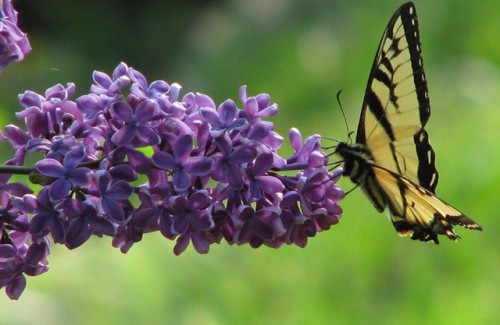 As the flowers start to bloom and the sun starts to have a warm shine, we all get Spring fever and open up our patios, terraces, and pools. It is time to listen to the birds chirping in the morning and to discover not only the new tree buds but to also discover “What is new and refreshing to imbibe with”.
As the flowers start to bloom and the sun starts to have a warm shine, we all get Spring fever and open up our patios, terraces, and pools. It is time to listen to the birds chirping in the morning and to discover not only the new tree buds but to also discover “What is new and refreshing to imbibe with”.
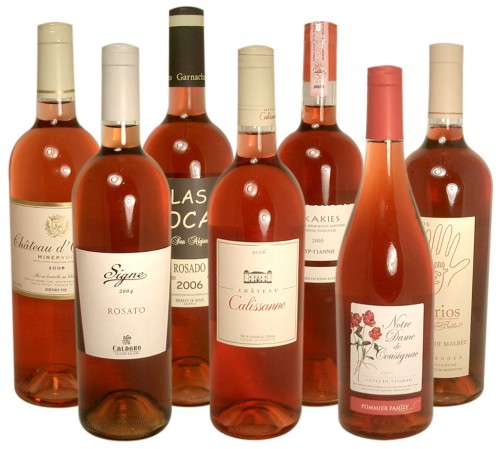 This is the time of year when all of the new Rose wines are being released from many different wine regions from around the world. We used to see a small smattering from the Cotes de Provence region in France. We now are seeing Rose wines from, just to name a few areas, Spain, Argentina, Greece, Bordeaux, California and we can’t leave out Long Island.
This is the time of year when all of the new Rose wines are being released from many different wine regions from around the world. We used to see a small smattering from the Cotes de Provence region in France. We now are seeing Rose wines from, just to name a few areas, Spain, Argentina, Greece, Bordeaux, California and we can’t leave out Long Island.
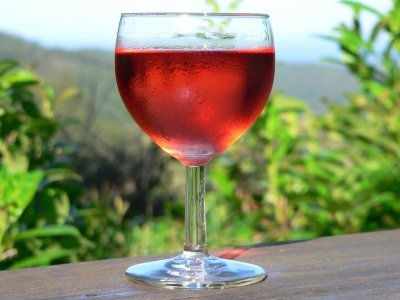 These wines are best being consumed as fresh as possible. That is one reason that if you have had the experience of buying a certain Rosé and really enjoying it, you go back to your local store or restaurant and it is not available anymore. How come?? Since there are so many new categories out there, the distributors and retailers are always still guessing as to how many cases will be sold in the new vintage that arrives on a particular wine. Since they have many choices they have to make sure that only so many cases of each item are delivered into their warehouse so when the fall comes and we turn more to the heftier reds they will have been able to sell through the current vintage and await their next vintage which will be released anywhere between April – June of the following year.
These wines are best being consumed as fresh as possible. That is one reason that if you have had the experience of buying a certain Rosé and really enjoying it, you go back to your local store or restaurant and it is not available anymore. How come?? Since there are so many new categories out there, the distributors and retailers are always still guessing as to how many cases will be sold in the new vintage that arrives on a particular wine. Since they have many choices they have to make sure that only so many cases of each item are delivered into their warehouse so when the fall comes and we turn more to the heftier reds they will have been able to sell through the current vintage and await their next vintage which will be released anywhere between April – June of the following year.
The process for producing the “Rose” color is by leaving the crushed black-skinned grapes to remain in contact with the juice for a short period of time as is explained below.
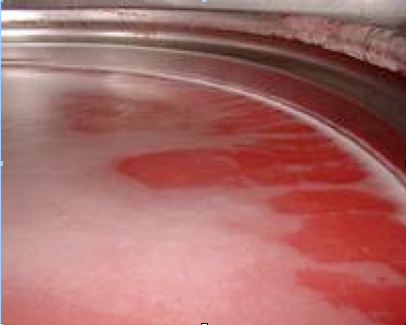
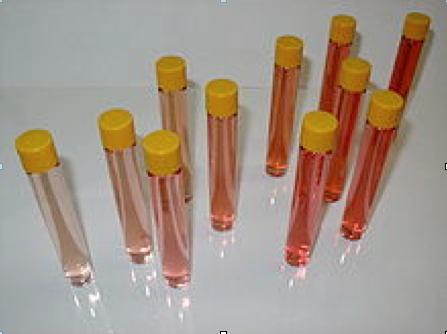
Rose wine is made in a range of colors, from a pale orange to a vivid near-purple, depending on the grapes, additives and wine making techniques.
The first is used when rosé wine is the primary product. Black-skinned grapes are crushed and the skins are allowed to remain in contact with the juice for a short period, typically one to three days. The must is then pressed, and the skins are discarded rather than left in contact throughout fermentation (as with red wine making). The skins contain much of the astringent tannin and other compounds, thereby leaving the structure more similar to a white wine. The longer that the skins are left in contact with the juice, the more intense the color of the final wine.
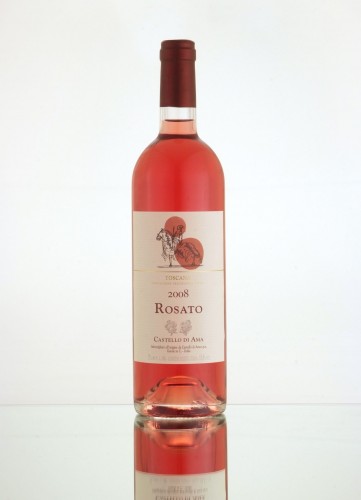 The Tuscany area of Italy produces a delicious Rose from a winery, Castello di Ama which is one of my favorite Italian Rosato’s. $20 per bottle
The Tuscany area of Italy produces a delicious Rose from a winery, Castello di Ama which is one of my favorite Italian Rosato’s. $20 per bottle
Some wine lovers might think it absurd to utilize the best sangiovese grapes to make a rosé of Castello di Ama. But that source has been, right from the beginning, the secret of the utter pleasure this wine brings. A crisp wine with rich nuances of tropical fruit, displaying the elegance of the hillside vineyards, this Rosato conjures up the fragrances of a spring day in Ama.
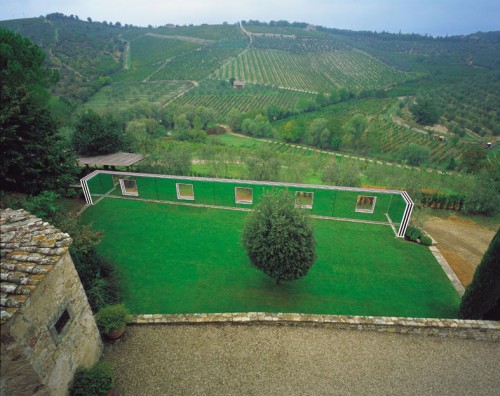 The terroir that yields Castello di Ama’s Rosé is the same that yields its Chianti Classico. The wine, 90% Sangiovese and 10% Merlot, gains its considerable body from bleeding-off (saignée) lots that will produce Chianti Classico; for this reason, the resulting wine is closer to a young red wine than to a white. Excellent structure and good holding potential over time are its principal qualities. But its fresh approachability, a hallmark of wines from fully ripe sangiovese, and the lushness of its fragrances combine to ensure that our rosato can be appreciated right from its first months in the bottle.
The terroir that yields Castello di Ama’s Rosé is the same that yields its Chianti Classico. The wine, 90% Sangiovese and 10% Merlot, gains its considerable body from bleeding-off (saignée) lots that will produce Chianti Classico; for this reason, the resulting wine is closer to a young red wine than to a white. Excellent structure and good holding potential over time are its principal qualities. But its fresh approachability, a hallmark of wines from fully ripe sangiovese, and the lushness of its fragrances combine to ensure that our rosato can be appreciated right from its first months in the bottle.
Another very well known Rose is the Bandol wine region with Provence.
The Bandol wine region, located near the coast east of Marseille and Cassis, is one of Provence’s most internationally recognized wine regions. Bandol’s vineyards are some of the oldest in France. The Romans planted the first vines some 2,500 years ago. Mourvèdre is the king of Bandol — actually Bandol is the only French wine region that is dominated by the Mourvèdre grape.
For both the red and rosé wines, Mourvèdre must account for at least 50% of the blend, though most producers will use more, with Grenache & Cinsaut usually filling out the rest of the wine’s composition. Syrah and Carignan are restricted in Bandol to composing no more than 15% of the blend or 10% individually. Nearly 70% of the region’s production is red wine with rosé wine being around 27% and a small amount of white production; however, Bandol is probably best known for their rosé
 One of the more well known Bandol Rosé’s is from the Domaine Tempier $40. Small production with fabulous quality.
One of the more well known Bandol Rosé’s is from the Domaine Tempier $40. Small production with fabulous quality.
 Argentina makes a delicious Rosé from their famous grape, Malbec. The Malbec Rosés are extremely flavorful and will go with a number of foods such as Deviled Eggs, Crab Cakes, Chorizo (the refreshing cold Rose cuts right through the spiciness of the food).
Argentina makes a delicious Rosé from their famous grape, Malbec. The Malbec Rosés are extremely flavorful and will go with a number of foods such as Deviled Eggs, Crab Cakes, Chorizo (the refreshing cold Rose cuts right through the spiciness of the food).
The Rose category from Spain has also become very popular. This particular wine is a blend of Garnacha, Viura and a small amount of the Tempranillo grape.
 Pretty much always a 90 point wine, the 2010 Muga rose is sure to delight any rose lover! A blend of Garnacha, Viura and a little Tempranillo, the 2010 Muga offers up complex aromas of pink grapefruit, strawberries, rhubarb and a gentle floral note. In the mouth it’s racy and brisk with plenty of red berry fruit edged with citrus zest, white pepper, and a nice mineral streak. A great buy at $12.
Pretty much always a 90 point wine, the 2010 Muga rose is sure to delight any rose lover! A blend of Garnacha, Viura and a little Tempranillo, the 2010 Muga offers up complex aromas of pink grapefruit, strawberries, rhubarb and a gentle floral note. In the mouth it’s racy and brisk with plenty of red berry fruit edged with citrus zest, white pepper, and a nice mineral streak. A great buy at $12.
Thanks Terry!! I’m just dying to sit outside on the terrace with some Rosé – can’t wait!! Now if my peonies would just bloom – I’d be a happier I’m sot

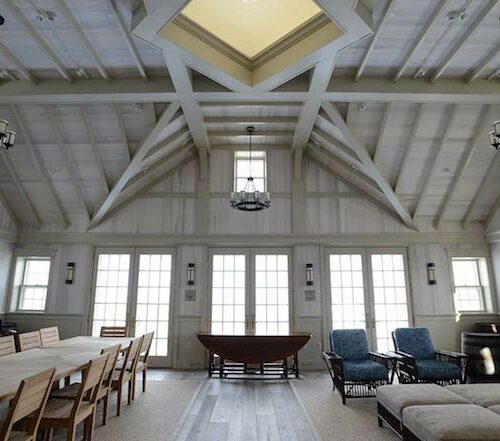

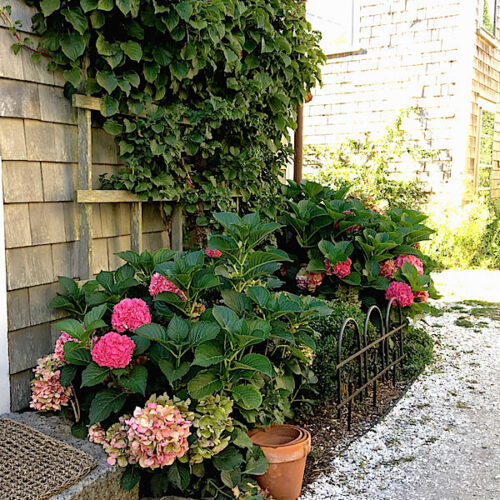


So informative, as always!
I don’t know why but here in Provence the trend is towards the lighter colored rosés–the gris.
I’m a Cotes de Provence gal myself – drink it all summer long! Great to see you last night among all the wonderful designers…
xxoo
I remember learning about this waaay back in French class. My teacher was fresh from her home country, so her accent was VERY thick and I took in about every other detail. This was something I got every last drop of! XO, Kelly
Another super informative post! My personal fave is Domaine Ott, I love it and always have a bottle on hand and tend to give it a lot as a hostess gift if I am going to someones house for dinner or lunch ( if they drink that is) but I wrote down some of the names above as its always great to discover new ones and I love the color….as vain as it sounds….its just such a beautiful color to pour into your glass:)
Learn something everyday from you, q! Am I going to sound smart or what?
Hope that your week is going well.
Teresa
xoxo
Oh how I loved this post. I snubbed my nose at Rose for a long time thinking it was liked the boxed zinfandel my mom use to drink. After becoming more knowledgable in wines, I started branching out. Last year I experimented with many roses. It doesn’t get extremely hot here in LA, but I do love it on a hot summer day. My favorite’s are the one Terry mentioned the Domaine Tempier and Domaine Ott that the Enchanted Garden mentioned. They are the two I drink the most. However, I’m looking forward to trying the other ones Terry mentioned from the other countries to compare how they taste to the Bandol region. There are several other inexpensive roses from France I love but the names are escaping me. It was great to learn about the process. I’m saving this post for my next trip to the wine shop.
I love Rosé in the summer and look forward to trying the Rosato from the winery, Castello di Ama. Another wonderful Wednesday post! Thank you Stacey and Terry! PS… Stacey, the bare roots of peonies do not like to be too far underground [eyes at 2 inches]. ox ; )
once again so much information i can taste it and long to visit
perfect summer drink, many thanks
deba
What a fabulous post! I started getting intrigued about Roses a few years ago. They used to have such a bad wrap but I tasted quite a few that are very good. I’m looking forward to enjoying some in the near future :)
My dear husband grew up in the South of France and his favorite wine is Rose. I am going to prepare an assortment of wines in a basket for Father’s day. As always, thanks so much for sharing your travels and your knowledge.
pve
I adore rosé! Thanks for all the wonderful suggestions here. Cheers!